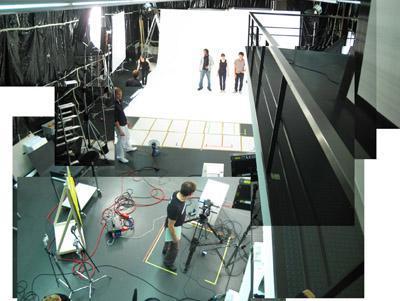
Since 2006, the MAS in Urban Design investigates Addis Ababa as well as rural Ethiopia as a developing territory and a case study scenario for the program. A recent installation at the Swiss pavilion of the Venice Biennale, under the heading «Explorations in Architecture: Teaching, Design, Research», depicts the conceptual diagram of this particular academic collaboration, involving the Addis Ababa University and the ETH Zurich.
Prominently displayed in the middle of the exhibition space is a semi translucent screen, on which images are projected from two opposing sides. Standing on one side of the screen, viewers simultaneously see the two projections, though one inverted as if looking in a mirror. The double projection registers two sides of one and the same research undertaking, addressing the potential development of contemporary urban territories: on one side of the screen, a series of rapidly transforming sites in Addis Ababa, Ethiopia, and on the other side, an equally fast changing agglomeration in Switzerland, known as the Schwyz Valley. Notwithstanding the differences of the two case studies, similarities are identified and transfers of strategies from one location to the other investigated. Located on each side of the screen are physical models, three-dimensional representations of the territories in question, on which design scenarios are digitally projected and superimposed onto the models’ surfaces – a kind of time-based four-dimensional display for the simulation of urban patterns. Hypothetical but nonetheless real design propositions for developing territories are shown, putting the emphasis on the gradual transformation of current urban and suburban conditions.
The installation presented at Venice Biennale shows but one facet of an ongoing research project done within the context of the recently founded «Urban Laboratory – Addis Ababa,» comprising faculty from both Ethiopia and Switzerland as well as architecture, landscape design, and urban planning students from all over the world. The laboratory is conceived as a think tank dedicated to sustainable development in the key disciplines relevant to the formation of the urban environment. Through a combination of different formats such a colloquia, conferences, design studios, exhibitions, lectures, and publications, the laboratory aims to establish a link between research, teaching, and practice. The MAS Program in Urban Design focuses on those questions, methods and instruments.
Marc Angélil